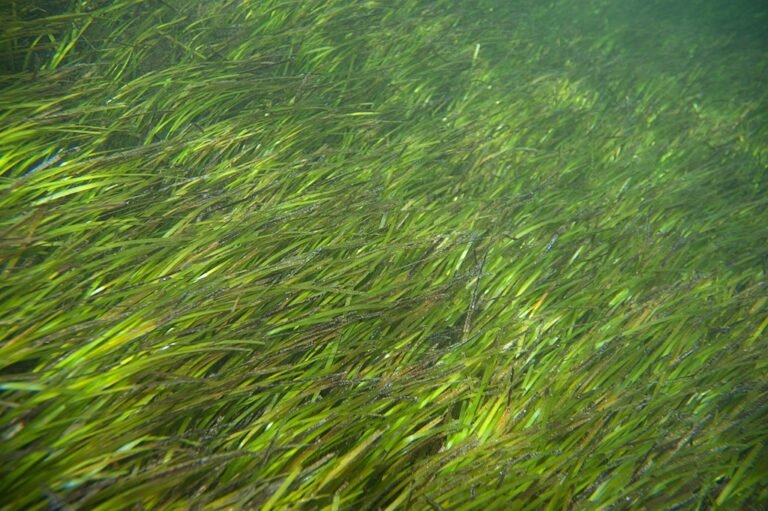The Environmental Impact of Pet Ownership and Sustainable Solutions
Pets have been beloved companions to humans for centuries. In recent years, the trend of adopting pets, particularly dogs and cats, has seen an uptick globally. An estimated half of the world’s population now shares their home with a pet. While pets bring joy and comfort to their owners, their care and maintenance also have significant environmental impacts, often overlooked by pet lovers.
This guide will dive deep into the environmental consequences of pet ownership and explore sustainable solutions to mitigate them. Drawing from personal stories, expert insights, and practical advice, this article will help you maintain a responsible relationship with your furry companion while reducing their carbon “pawprint.”
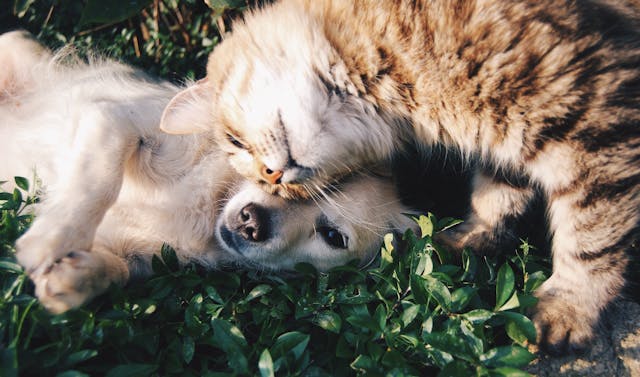
In This Article
- My Personal Wake-Up Call: Discovering the Impact of Pet Ownership
- Sustainable Solutions for Pet Ownership
- Ethical Considerations in Pet Ownership
- Regional Pet Ownership Trends and Environmental Impacts
- Expert Insights and Case Studies
- Conclusion
My Personal Wake-Up Call: Discovering the Impact of Pet Ownership
As a lifelong pet owner, I’ve always cherished the joy and companionship pets bring. My Labrador, Max, has been my loyal companion for years, and taking care of him has always felt natural. But a few years ago, a conversation with an environmentally-conscious friend changed my perspective. She asked, “Have you ever considered Max’s carbon pawprint?” I was taken aback. Like many pet owners, I assumed my love and care for Max were enough.
That evening, I started researching. I discovered that Max’s meat-heavy diet, plastic toys, and frequent baths with conventional shampoos were contributing significantly to environmental degradation. This realisation was a wake-up call, and I resolved to adopt more sustainable practices. What followed was a journey of learning and change, which I’ll share with you in this article.
The Environmental Consequences of Pet Ownership
Growing Pet Population and Resource Demands
The global pet population is enormous, with dogs and cats being the most common companions. In the United States alone, over 90 million dogs and nearly 60 million cats share homes with humans. This growing number of pets demands vast resources, from food production to waste management.
A 2020 study published in the Global Environmental Change highlighted that producing dry pet food alone generates 56-151 million tons of greenhouse gases annually. Additionally, the energy and materials used to manufacture pet products like toys, beds, and grooming supplies add to the environmental burden.
Meat-Based Diets and Carbon Emissions
The diets of pets, particularly dogs and cats, are often meat-intensive. A 2017 UCLA study estimated that the meat consumed by U.S. pets creates the equivalent of 64 million tons of CO2 annually. This accounts for roughly 25-30% of the environmental impact of meat consumption in the country.
Beyond carbon emissions, meat production requires vast amounts of land and water, exacerbating deforestation and water scarcity. For instance, producing one kilogram of beef can use up to 15,000 litres of water, a significant strain on natural resources.
Waste Management Challenges
Pet waste is another major issue. Dogs and cats produce millions of tons of waste annually, much of which ends up in landfills or pollutes waterways. Conventional plastic bags used for disposal take hundreds of years to decompose, further harming the environment. Improperly managed waste can also spread harmful bacteria and parasites, posing risks to both human health and ecosystems.
Sustainable Solutions for Pet Ownership
Transitioning to Sustainable Pet Food
Insect-Based Protein:
Insect-based pet food has emerged as a promising alternative to traditional meat-heavy diets. High in protein and essential nutrients, insects like black soldier fly larvae require a fraction of the land, water, and energy compared to conventional livestock. For instance, producing 1 kilogram of insect protein uses 10% of the resources needed for the same amount of beef protein. Studies, such as one published in the Journal of Food, indicate that transitioning to insect-based food can reduce greenhouse gas emissions by up to 50% compared to traditional pet food production.
Accessibility is also improving. Brands like Yora and Chippin are making insect-based products more widely available, and consumer adoption is growing steadily. Surveys show that 40% of environmentally-conscious pet owners are open to trying insect-based diets for their pets.
Personal Insight: When I first introduced Max to insect-based kibble, I was sceptical. To my surprise, he loved it! It felt great knowing that his diet was both nutritious and eco-friendly.
Learn More: 10 Endangered Animals That Help the Environment
Plant-Based Options:
Plant-based pet foods are becoming a viable alternative to traditional meat-based diets. These products are formulated to meet pets’ nutritional needs using plant-derived proteins, such as lentils, peas, and quinoa. According to a 2024 article published on PetMD, plant-based diets can support healthy adult dogs, provided they are well-balanced and supplemented appropriately.
However, plant-based diets face scepticism, particularly for obligate carnivores like cats. Research is ongoing to ensure these diets meet the stringent nutritional requirements of felines. For owners of omnivorous pets, plant-based options present an opportunity to reduce reliance on animal agriculture, a major contributor to greenhouse gas emissions.
Homemade Organic Meals:
Homemade organic meals allow pet owners to control ingredient quality and avoid additives common in commercial pet food. This approach often involves using organic meats, vegetables, and grains to prepare nutritionally balanced meals. While this method can reduce exposure to pesticides and support sustainable farming practices, it requires careful planning.
Nutritional imbalances are a significant risk with homemade diets. Consulting a veterinarian or pet nutritionist is essential to ensure meals meet pets’ dietary needs. Additionally, the cost of organic ingredients can be a barrier for some pet owners, though proponents argue the long-term health benefits outweigh the initial expense.
Eco-Friendly Pet Products
Toys and Accessories
Many traditional pet toys are made from synthetic materials that contribute to waste and pollution. Instead, opt for toys crafted from natural, recycled, or upcycled materials. Look for certifications such as OEKO-TEX or GOTS (Global Organic Textile Standard), which ensure products are free from harmful chemicals and made sustainably.
- Example: Max’s favourite chew toy, made from natural rubber, is durable, non-toxic, and biodegradable. It provides hours of fun without harming the environment, even after its lifecycle ends.
Other options include hemp rope toys, recycled fabric plushies, or upcycled balls made from old materials. These choices reduce waste and offer the same level of entertainment for your pet.
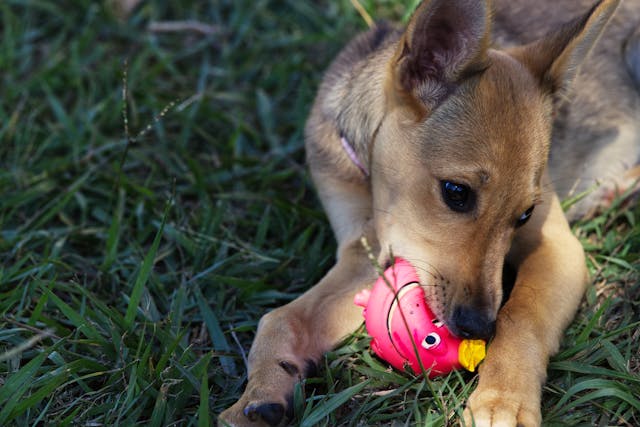
Sustainable Pet Beds
A comfortable bed is essential for your pet, and choosing a sustainable option makes it even better. Brands like West Paw Design create beds using recycled materials, such as plastic bottles, which are transformed into durable, washable covers.
For a more personal and budget-friendly approach, try a DIY pet bed. Repurpose old blankets, towels, or clothes into a cosy sleeping spot.
- Personal Story: I recently converted an old sweater into a snuggly bed for Max. Not only did it save fabric from the landfill, but Max seemed to love the familiar scent.
DIY beds also allow you to customise the size and design, ensuring a perfect fit for your pet.

Biodegradable Waste Bags
Managing pet waste responsibly is crucial for sustainability. Instead of conventional plastic bags, which take centuries to decompose, choose compostable or biodegradable options. Brands like Earth Rated offer bags that break down faster and are easy on the planet.
These bags are affordable and come in various sizes to suit different needs. Whether you’re walking your dog in the park or cleaning up the backyard, they offer a convenient and eco-friendly solution.
Managing Pet Waste Responsibly
Pet waste, when disposed of improperly, contributes to methane emissions and pollutes waterways. Here’s how to manage it sustainably:
- Compostable Bags and Systems
Invest in compostable bags and consider setting up a pet waste composting system. While this compost should only be used for non-edible plants, it’s a great way to reduce landfill contributions.
- Pro Tip: I set up a backyard composting system for Max’s waste. Though it required some initial effort, it’s now an effective and eco-friendly solution.
- Avoid Flushing Waste
Flushing pet waste can harm sewage systems and waterways due to pathogens. Always use approved disposal methods. - Pet Waste Recycling Programs
Check if your community offers pet waste recycling services. These programs convert waste into fertiliser or energy, offering an innovative disposal method.
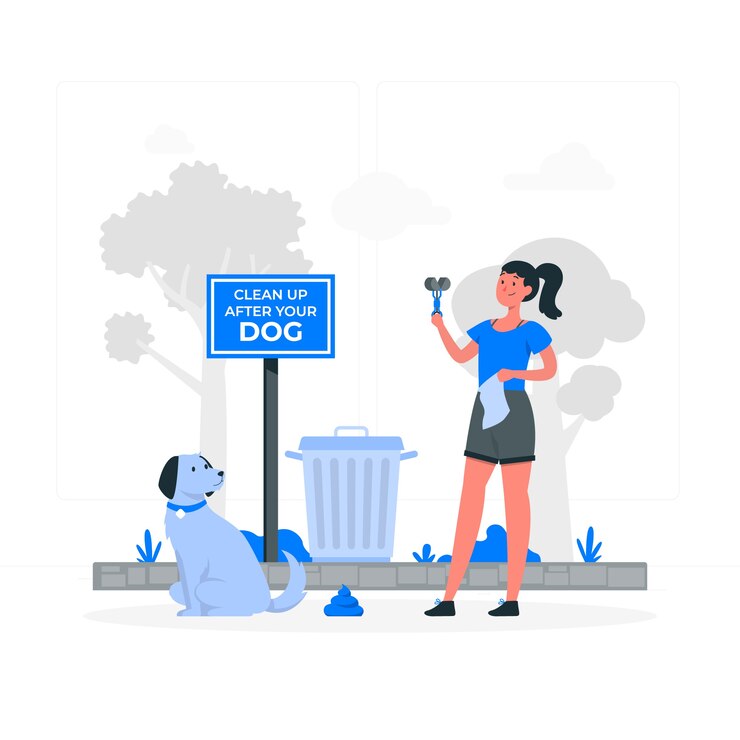
Sustainable Grooming Practices
Your pet’s hygiene routine can also support the environment:
- Natural Grooming Products
Switch to shampoos and conditioners made from biodegradable ingredients. Brands like Earthbath and Burt’s Bees for Pets provide eco-friendly options that are gentle on both your pet and the environment.
- Personal Story: When I transitioned to natural grooming products for Max, I noticed his coat became shinier, and I felt reassured knowing we weren’t releasing harmful chemicals into the water system.
- Energy-Efficient Tools
Use manual or energy-efficient grooming tools. Bamboo brushes, for example, reduce reliance on plastic, while manual nail clippers eliminate electricity use. - Water Conservation
Adopt water-efficient bathing techniques, such as using a handheld sprayer or washing your pet in a shallow basin. These methods minimise water wastage without compromising cleanliness.
Learn More: Top 5 Sustainable Ranching Practices to Reduce Environmental Impact and Boost Profitability
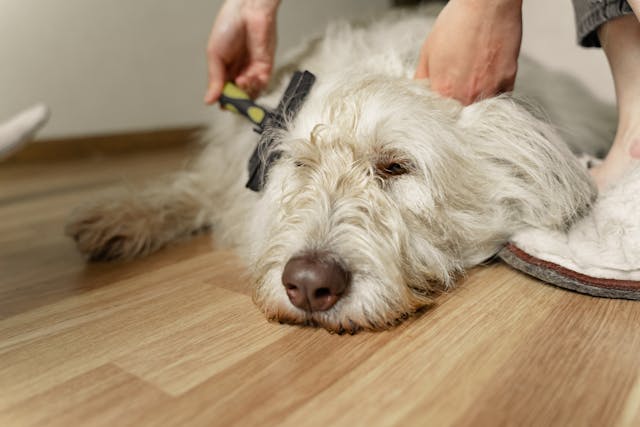
Ethical Considerations in Pet Ownership
Sustainable pet ownership raises important ethical questions about balancing pet care with environmental stewardship. While caring for pets is a deeply personal and cultural practice, it often conflicts with sustainability goals. For example, feeding pets high-resource diets or using disposable pet products contributes to ecological strain. Dr. Elena Morris, an environmental ethicist, emphasizes, “Sustainability must include ethical considerations of how our choices affect ecosystems and other species.” Pet owners face the challenge of prioritizing their pets’ well-being while minimizing environmental harm, which calls for thoughtful decisions like adopting eco-friendly practices and choosing sustainable pet products.
The adoption of exotic pets presents additional ethical and environmental concerns. These animals are often removed from their natural habitats, disrupting ecosystems and risking their well-being in unsuitable living conditions. Similarly, promoting certain breeds, particularly those with genetic health issues, raises questions about ethical breeding practices. Many of these breeds require intensive medical care, which further increases their environmental footprint.
Cultural practices also play a significant role in pet ownership ethics. In some cultures, animals serve as working companions, while in others, pets symbolize status or affection. Aligning these diverse practices with sustainability requires promoting education, equitable access to resources, and fostering global conversations about responsible, ethical pet care that honours both tradition and the environment.
Regional Pet Ownership Trends and Environmental Impacts
- Asia
- Trends: Pet ownership in Asia is rapidly increasing, particularly in urban areas like China, Japan, and India. The rise of the middle class and changing lifestyles contribute to higher pet adoption rates.
- Environmental Impact: With increased demand for pet food, traditional meat-based diets exacerbate the region’s already significant greenhouse gas emissions. However, insect-based and plant-based pet food options are gradually gaining acceptance, particularly in Japan and South Korea.
- Africa
- Trends: Pet ownership in Africa is culturally and economically diverse. Dogs are commonly kept for security and companionship, while cats are valued for their pest-control abilities. The market for commercial pet food is less developed, with many pet owners relying on homemade diets.
- Environmental Impact: Homemade diets often have a lower environmental footprint compared to commercial options, but the lack of balanced nutrition poses health risks for pets. There is limited awareness and availability of eco-friendly pet care products.
- South America
- Trends: South America, particularly Brazil and Argentina, has some of the highest pet ownership rates globally. Pets are integral to family life, and there is a growing market for premium pet food and eco-friendly products.
- Environmental Impact: The increasing preference for premium pet food parallels a higher environmental footprint. However, the region’s rich biodiversity presents opportunities for sourcing sustainable, local ingredients for pet products.
Comparative Analysis: Carbon Emissions from Pet Diets
The table below illustrates the carbon emissions associated with various pet diets based on recent global studies:
| Diet Type | Carbon Emissions (kg CO₂e/year) |
|---|---|
| Meat-based Commercial | 1,500 – 2,500 |
| Plant-based Commercial | 800 – 1,200 |
| Insect-based Commercial | 300 – 500 |
| Homemade Organic | 400 – 700 |
Adoption of Eco-Friendly Products Globally
The adoption of eco-friendly pet care products varies significantly across regions:
| Region | Adoption Rate (%) | Common Eco-Friendly Products |
| North America | 40 | Biodegradable waste bags, natural pet food |
| Europe | 50 | Organic treats, compostable toys |
| Asia | 25 | Recyclable packaging, plant-based food |
| Africa | 10 | Locally sourced, low-impact solutions |
| South America | 30 | Biodegradable packaging, insect-based food |
Broader Impacts and Community Solutions
Protecting Biodiversity
Free-roaming pets, especially cats, can devastate local wildlife populations. Estimates suggest that domestic cats kill billions of birds and small mammals annually in the U.S. Responsible pet ownership, including keeping cats indoors, is essential for protecting biodiversity.
Urban Innovations
As cities grow, so does urban pet ownership. Communities can promote sustainability through:
- Pet-friendly parks with waste disposal stations.
- Local stores offering eco-friendly pet supplies.
- Educational campaigns on sustainable pet care.
- Real-World Example: San Francisco’s waste disposal program collects pet waste for composting, significantly reducing landfill contributions.
Practical Tips for Eco-Conscious Pet Ownership
- DIY Solutions: Create toys and treats using upcycled materials.
- Support Local Brands: Buy from local, eco-friendly businesses to reduce transportation emissions.
- Monitor Impact: Use online tools to calculate and offset your pet’s carbon footprint.
- Educate Others: Share sustainable practices with fellow pet owners to amplify impact.
Expert Insights and Case Studies
Pet ownership comes with environmental responsibilities, as caring for pets can leave a significant ecological footprint. Dr. Emily Hansen, a veterinarian with a focus on sustainable practices, highlights, “Small changes in pet care, like choosing eco-friendly products or reducing waste, can collectively have a massive impact on the environment.” Similarly, Dr. Jacob Torres, an environmental scientist, stresses that “pet food production and waste management are often overlooked contributors to environmental degradation. Adopting sustainable pet care practices is essential for reducing this burden.”
One inspiring case study is the story of Green Paws, a small community initiative in Portland, Oregon. Founded by pet owners who wanted to minimise their pets’ environmental impact, the group promotes sustainable habits like composting pet waste, choosing biodegradable pet supplies, and advocating for locally sourced, organic pet food. Green Paws’ efforts have diverted tons of waste from landfills and inspired similar movements nationwide.
Another example is Luna’s Legacy, a pet shelter in Austin, Texas, that operates entirely on renewable energy and uses eco-friendly materials. Their practices include upcycling old furniture into pet beds and hosting workshops on sustainable pet care, proving that even organisations can lead the way in reducing environmental impact while supporting animal welfare.
Looking Ahead: The Future of Sustainable Pet Ownership
The future of sustainable pet ownership hinges on innovation, awareness, and collective responsibility. As environmental concerns grow, companies are exploring cutting-edge solutions, such as insect-based pet foods and lab-grown proteins, which have significantly lower carbon footprints compared to traditional pet foods. Dr. Amanda Reed, an animal nutritionist, notes, “Alternative proteins not only reduce environmental impact but also ensure pets receive balanced and nutritious diets.”
Technology is also playing a vital role. Smart devices like eco-friendly pet waste composters and water-efficient pet grooming systems are making sustainable practices more accessible. Sustainability advocates, like Julia Carter of the Green Pet Project, emphasise that “the integration of technology and education will empower pet owners to make more eco-conscious choices.”
Additionally, the cultural shift toward environmental stewardship is driving pet-related industries to adopt greener practices. From zero-waste pet toy brands to environmentally responsible veterinary clinics, the push for sustainability is becoming mainstream. Real-life initiatives, such as community programs promoting shared resources like toy libraries and bulk pet food co-ops, exemplify how collaboration can drive change.
Looking ahead, the path to sustainable pet ownership will require pet owners, industries, and policymakers to work together, ensuring that our love for animals aligns with the planet’s well-being. By embracing these innovations and collective actions, the future of pet ownership can be both compassionate and eco-friendly.
Conclusion
Owning a pet is a privilege that comes with responsibility—not just to your furry friend but to the planet. By adopting sustainable practices, from eco-friendly diets to waste management, you can reduce your pet’s environmental impact while ensuring their well-being. Together, let’s create a world where pets and the planet thrive.
Personal Reflection: My journey with Max has taught me that small changes can make a big difference. Every eco-friendly choice we make contributes to a healthier planet for future generations—and for our beloved pets.

